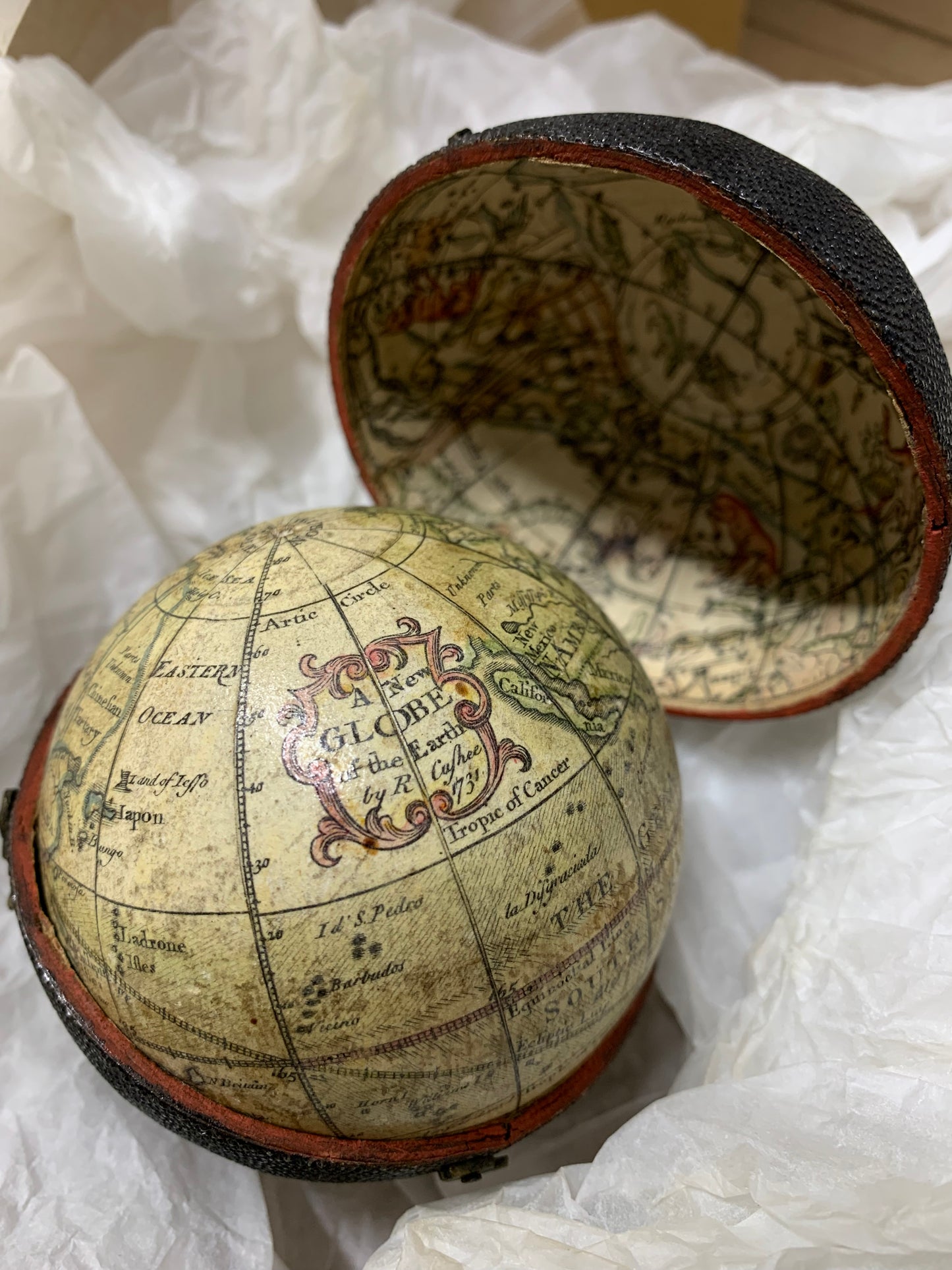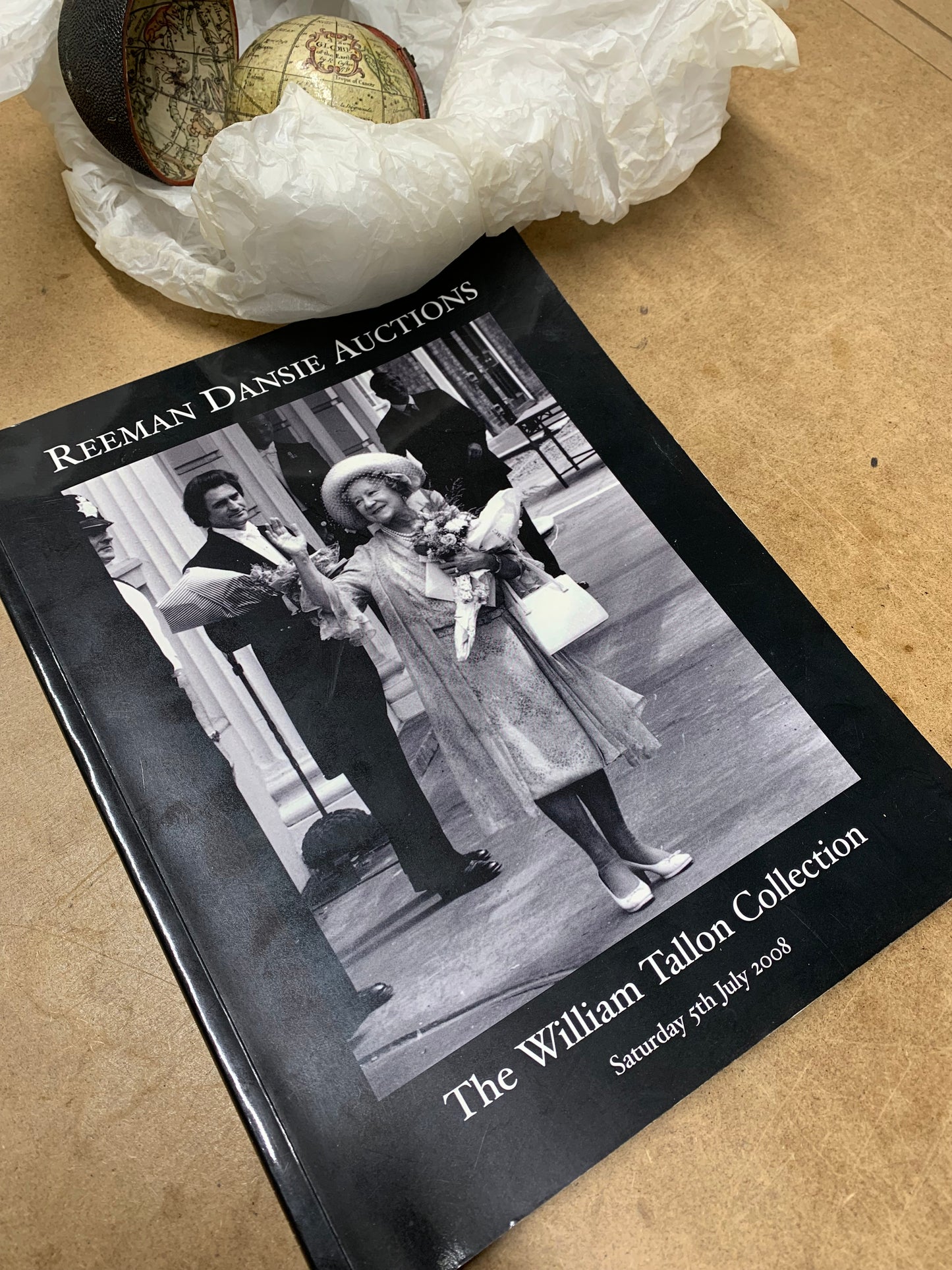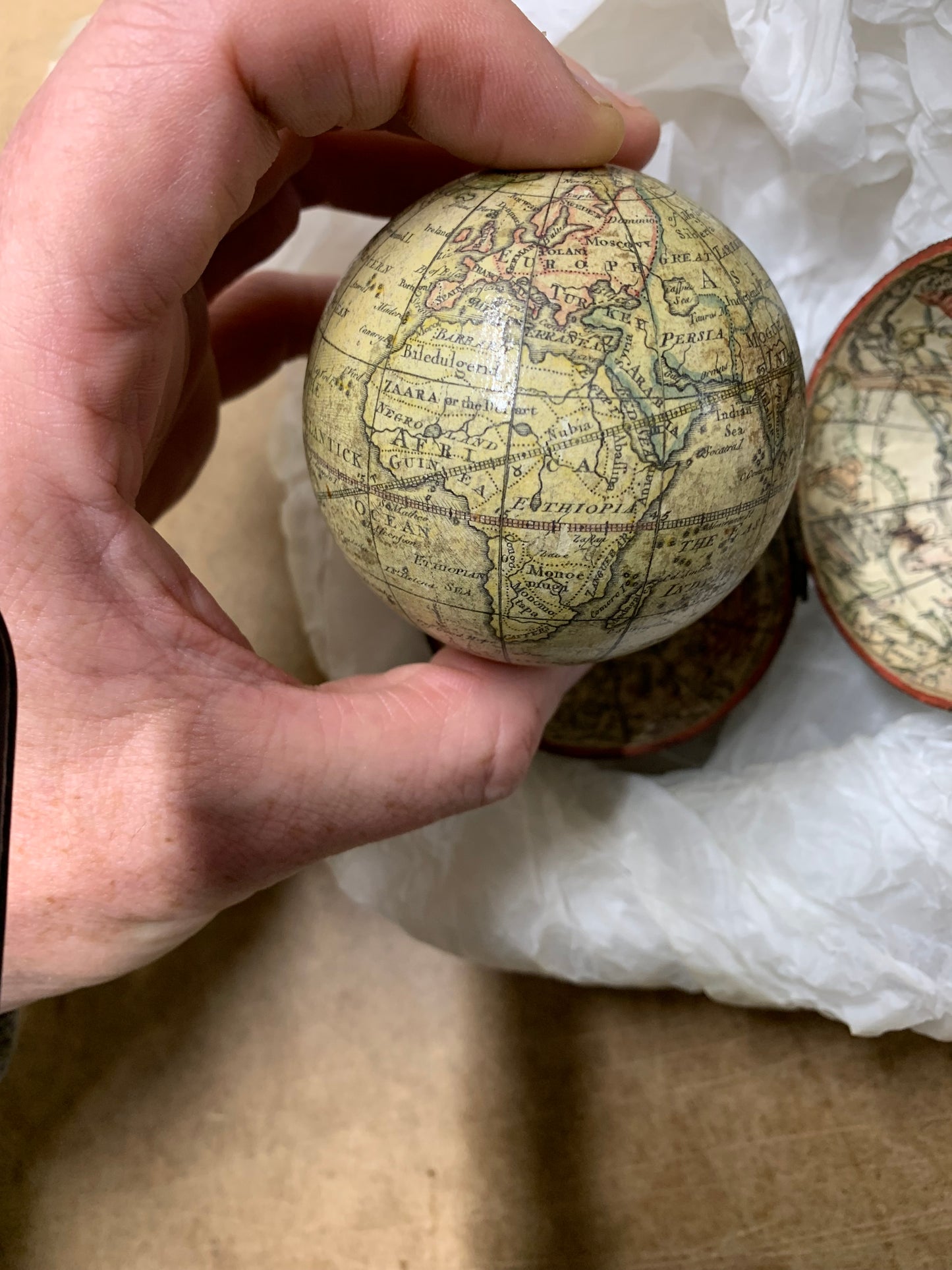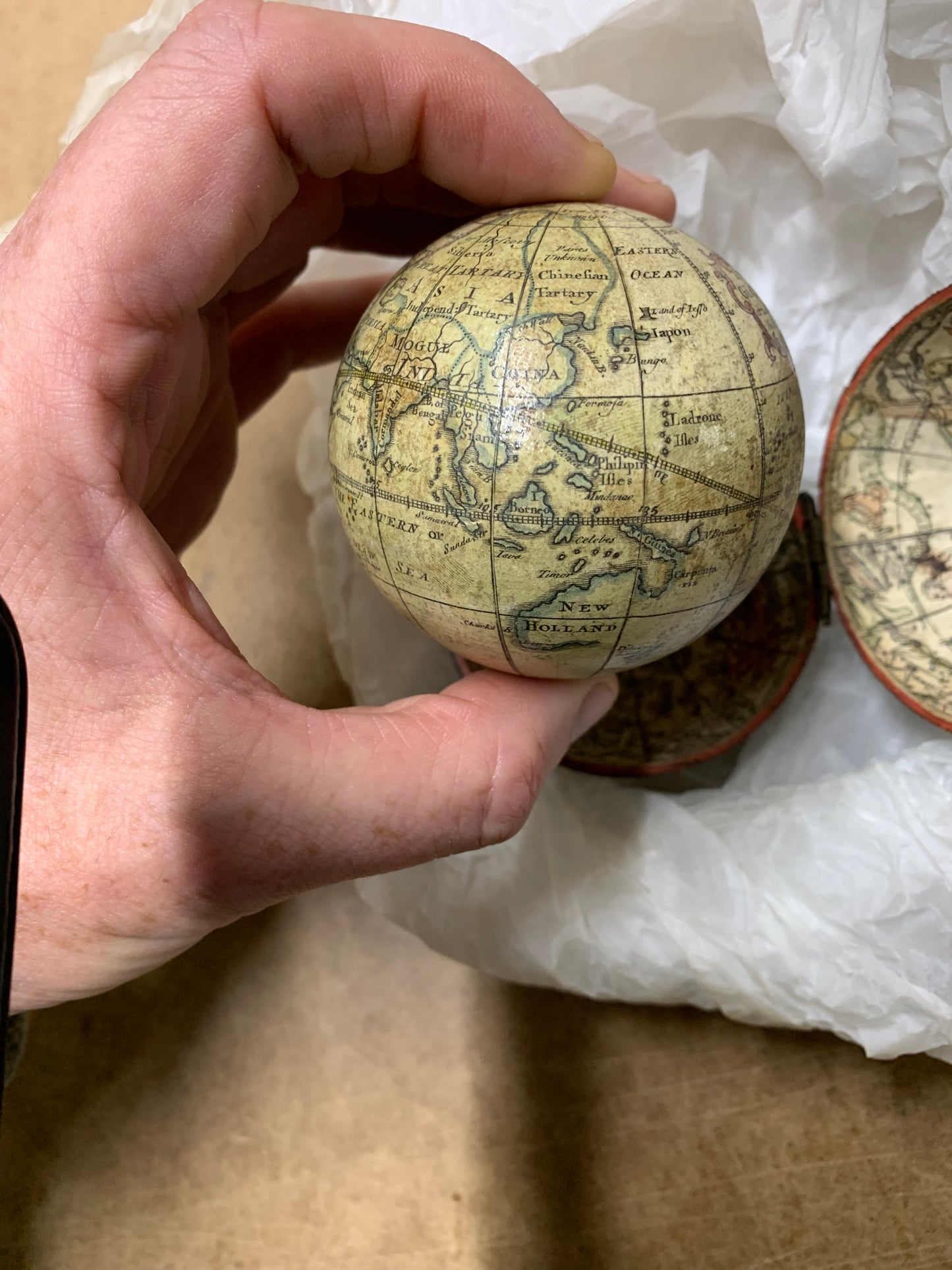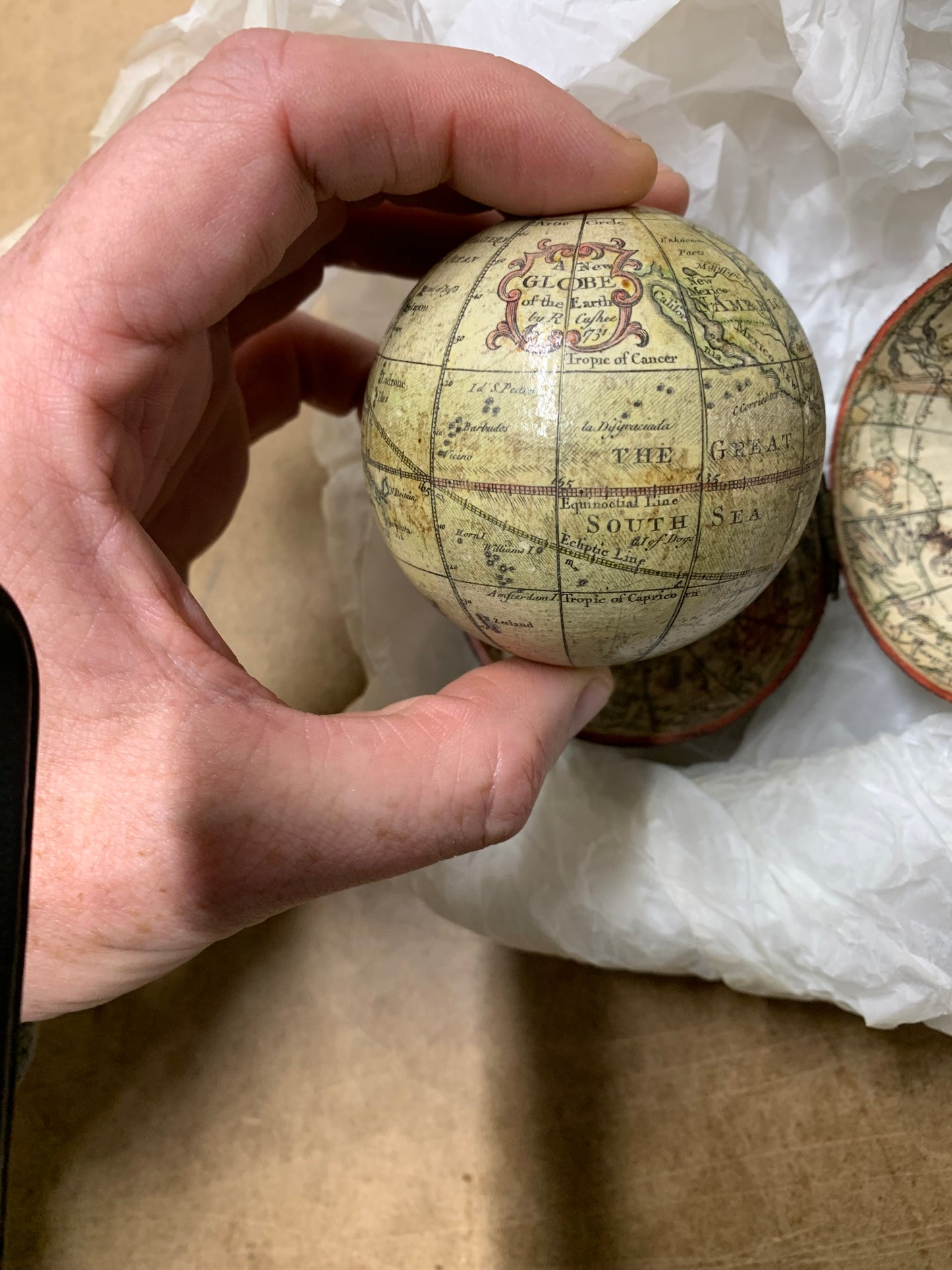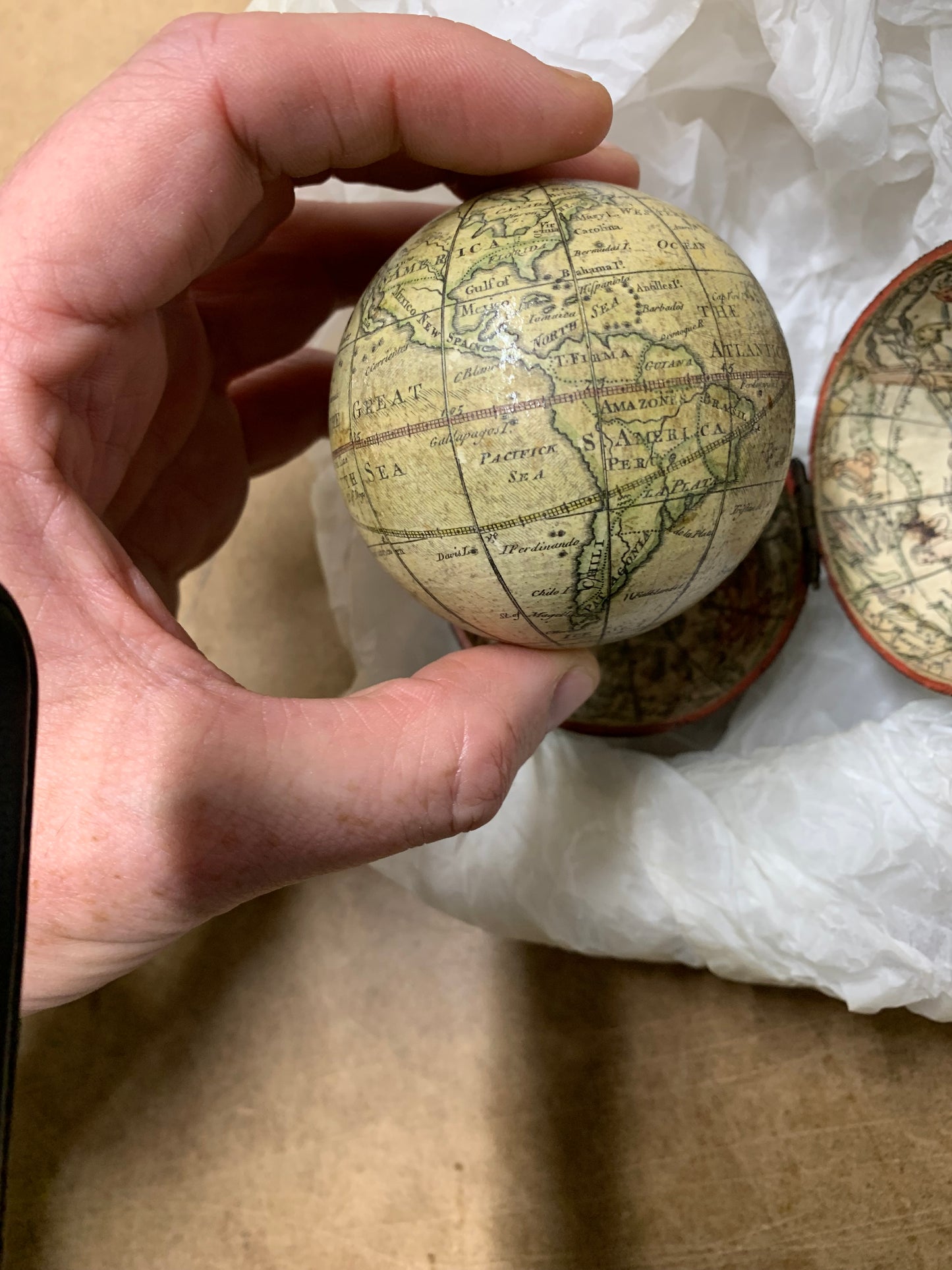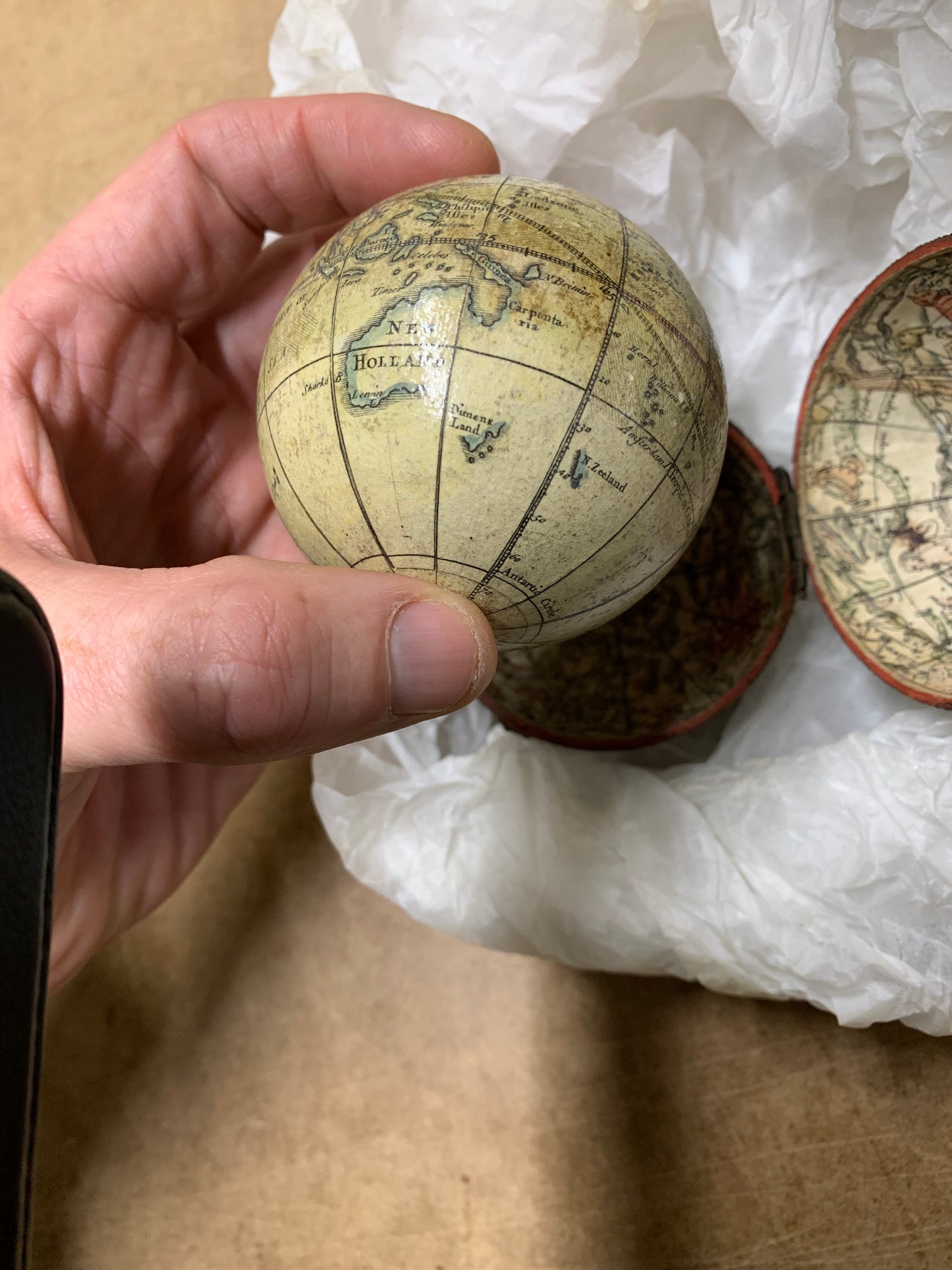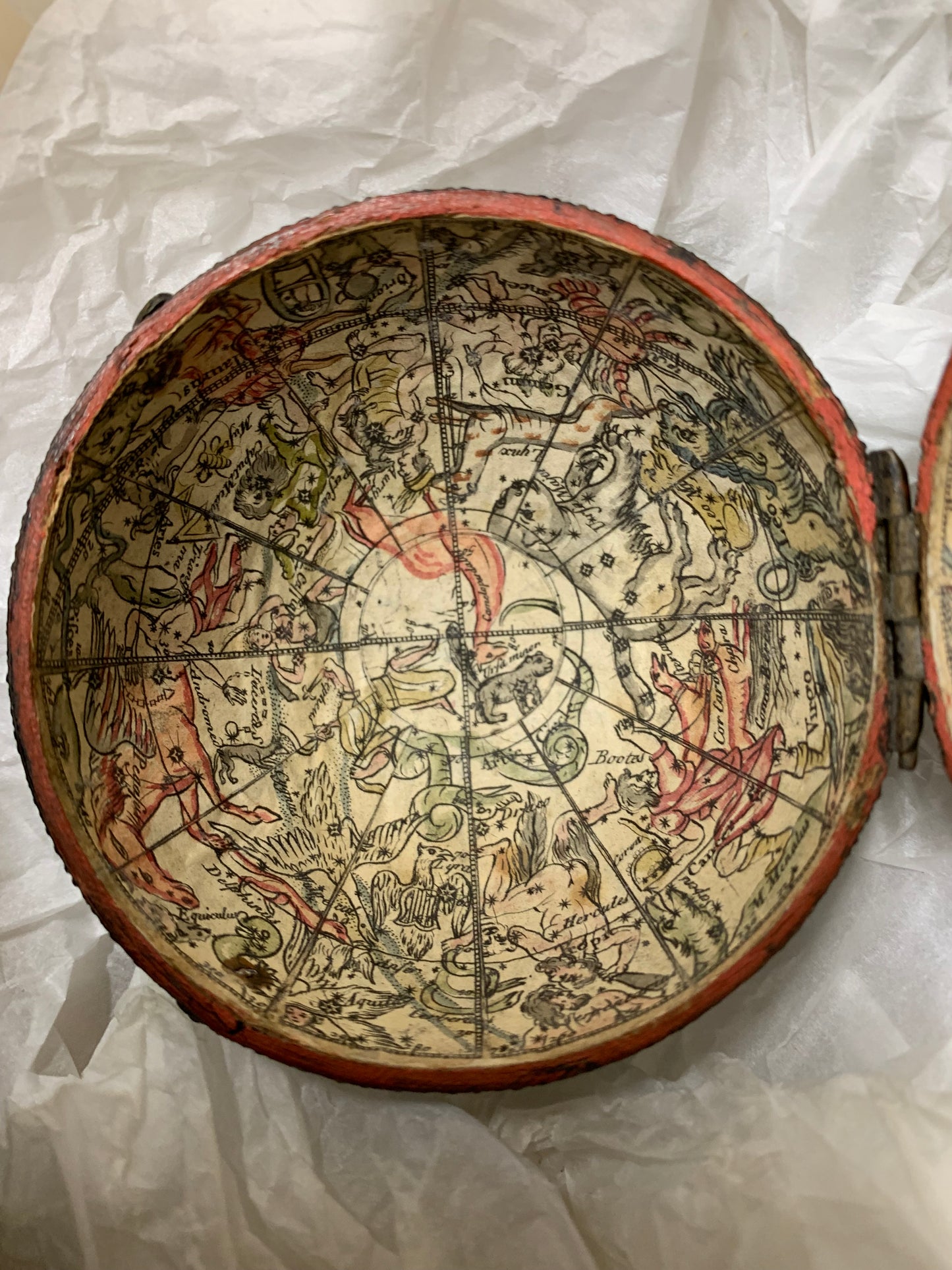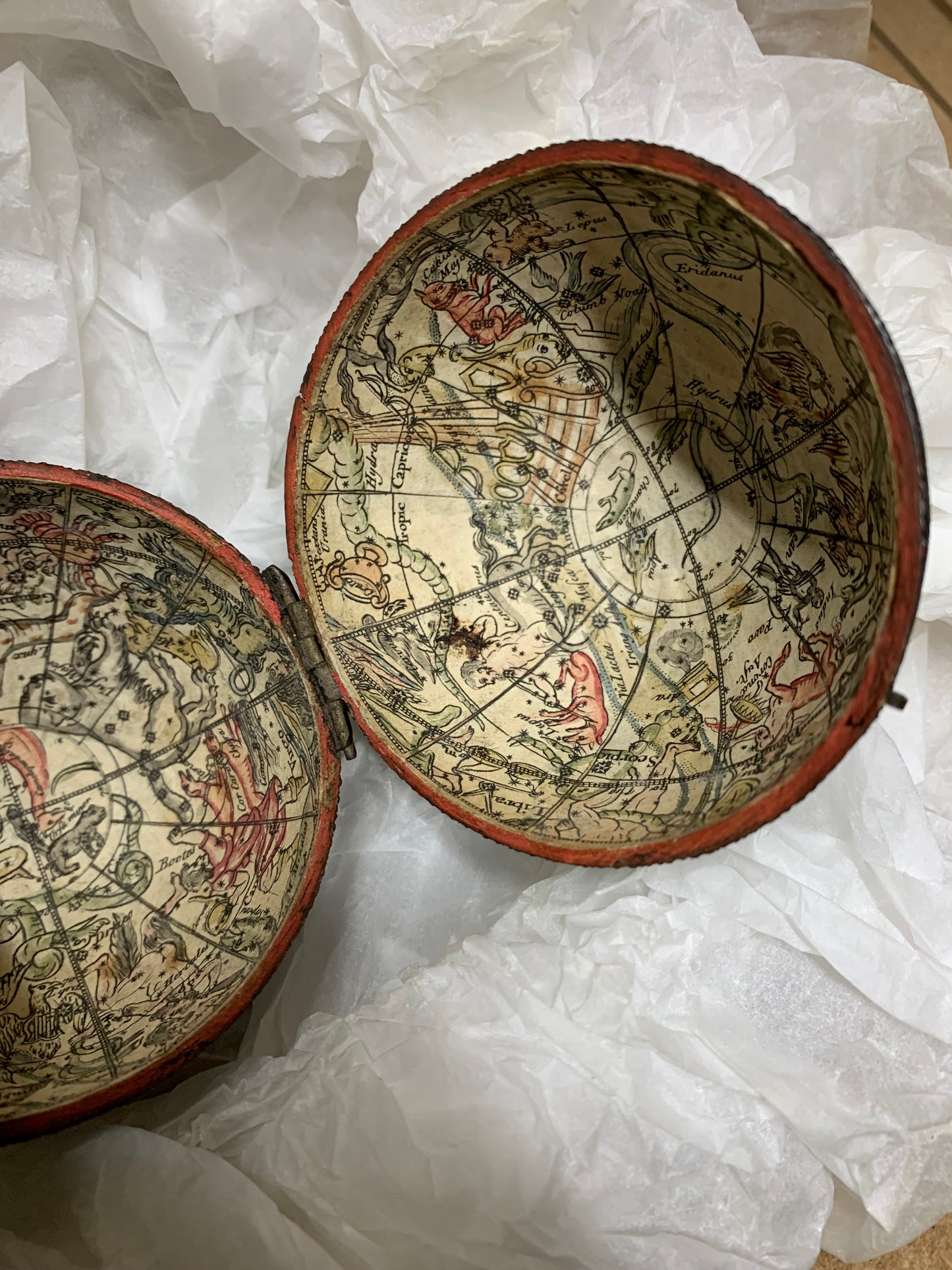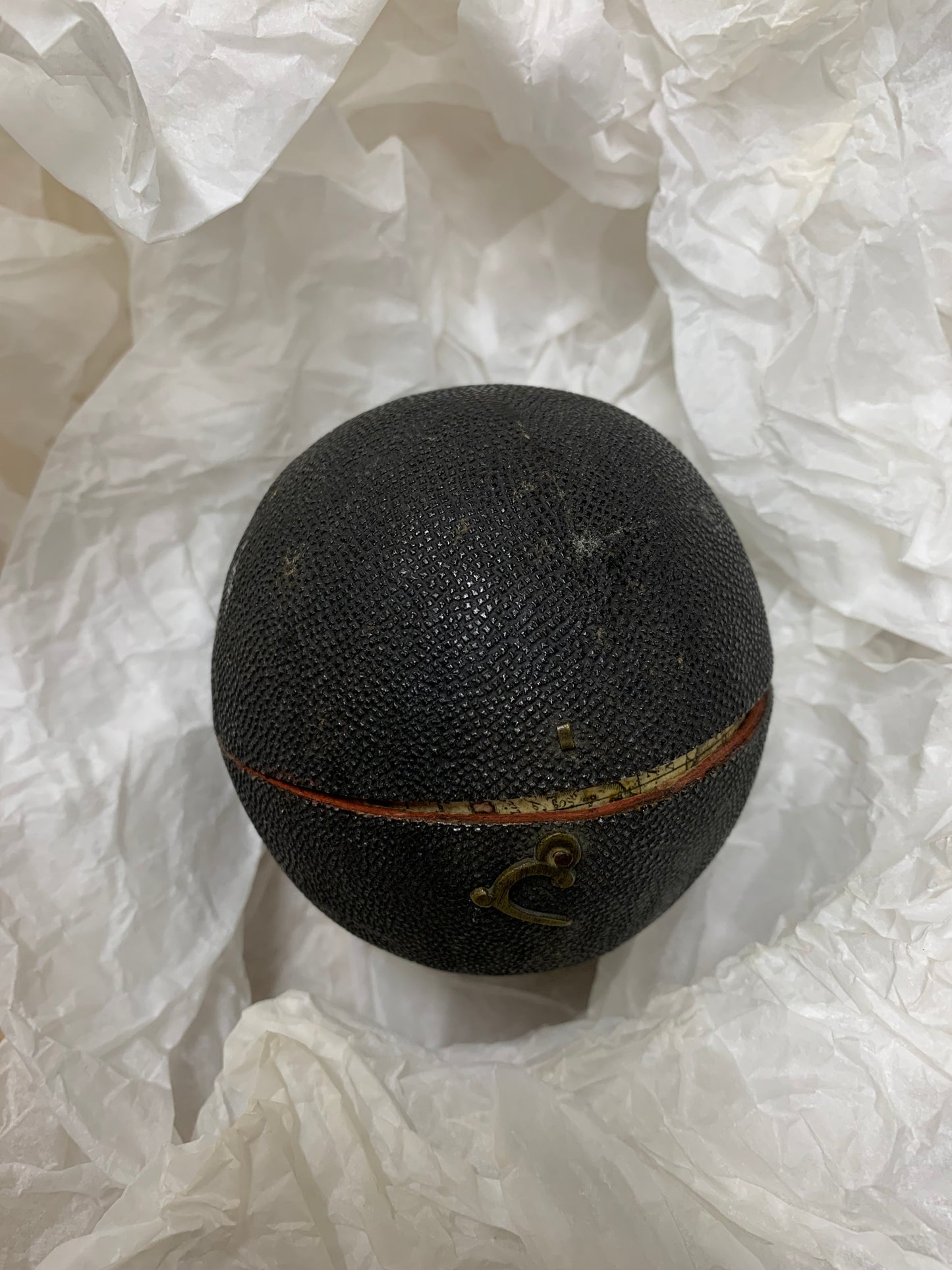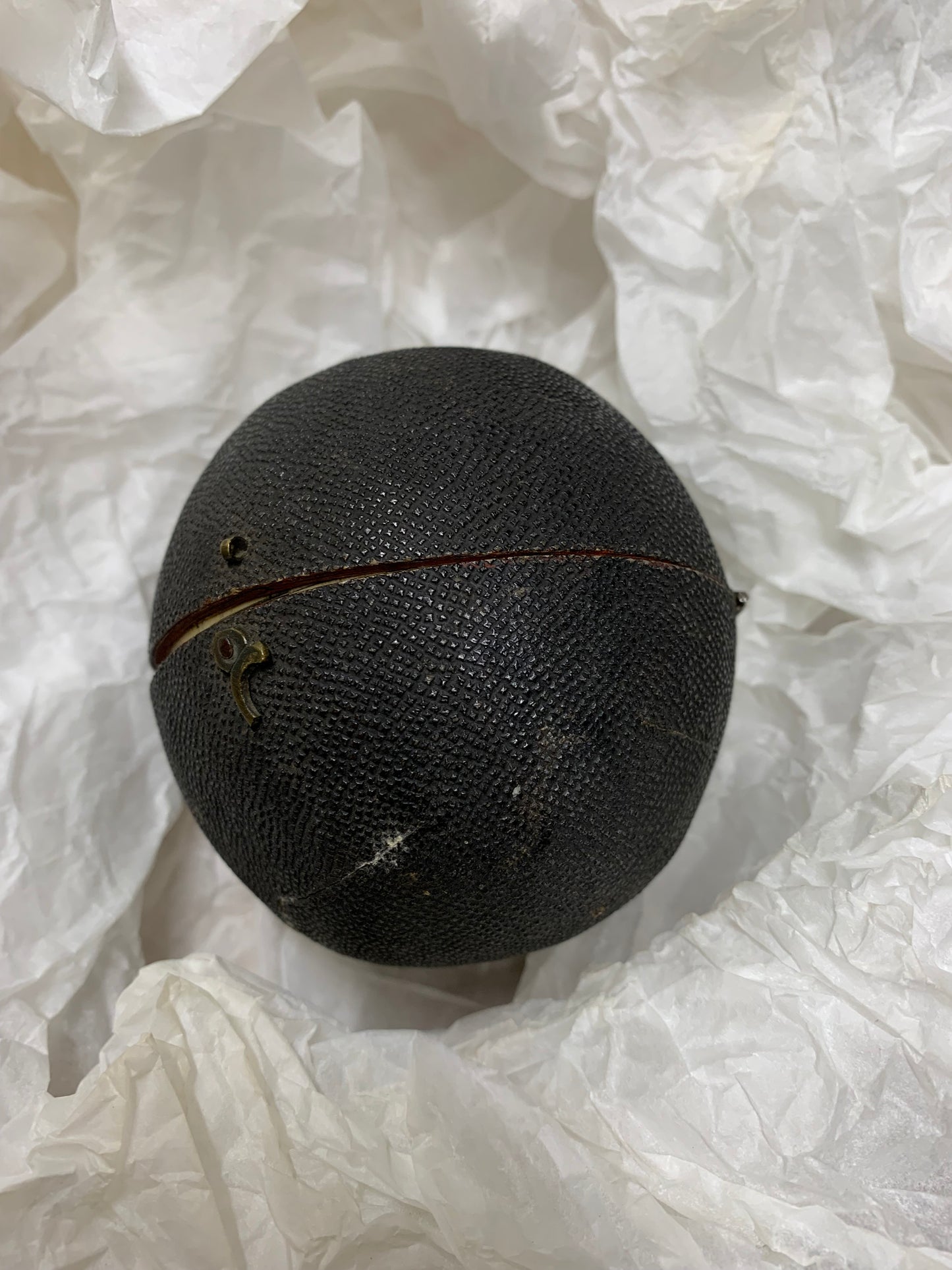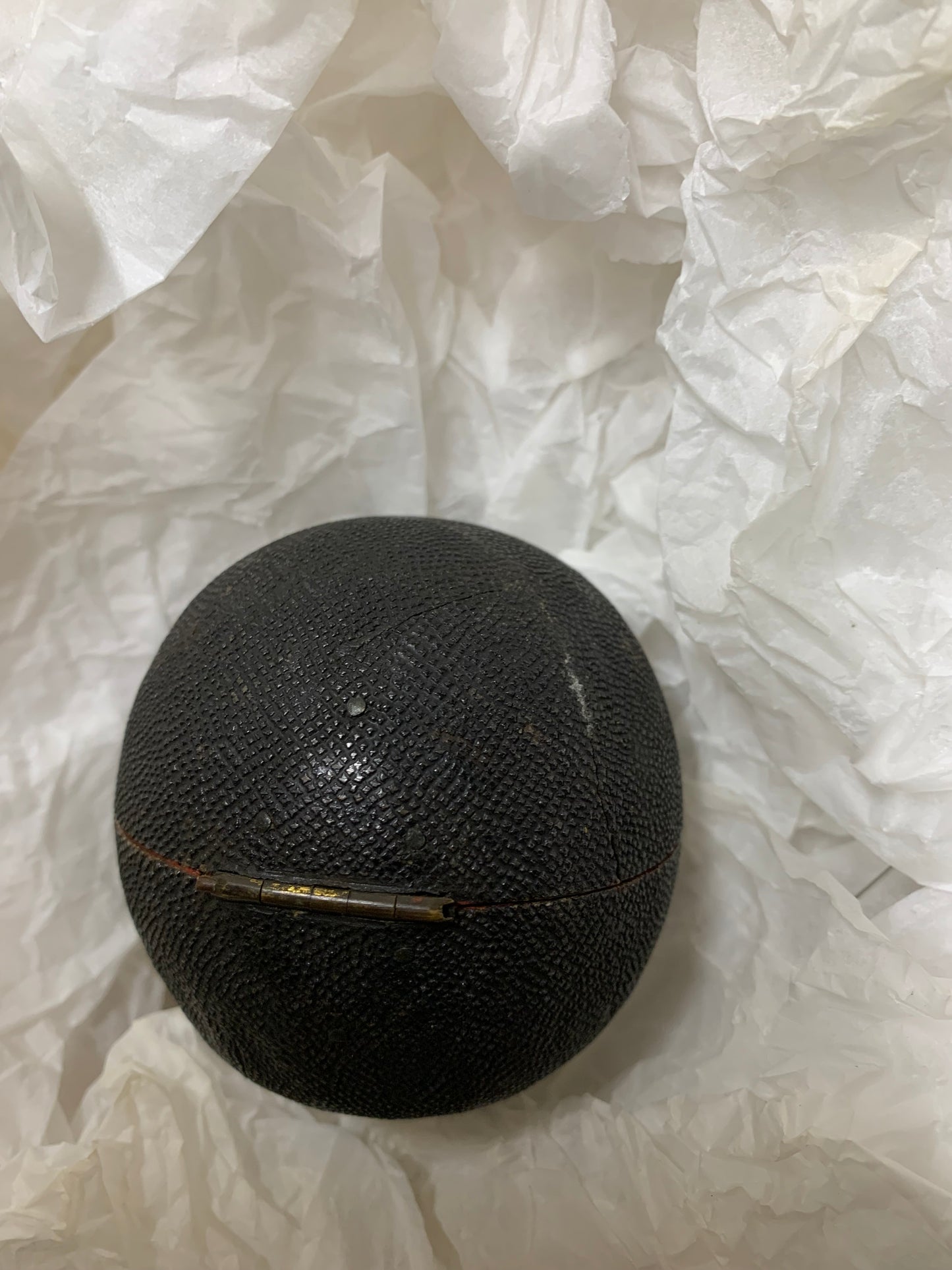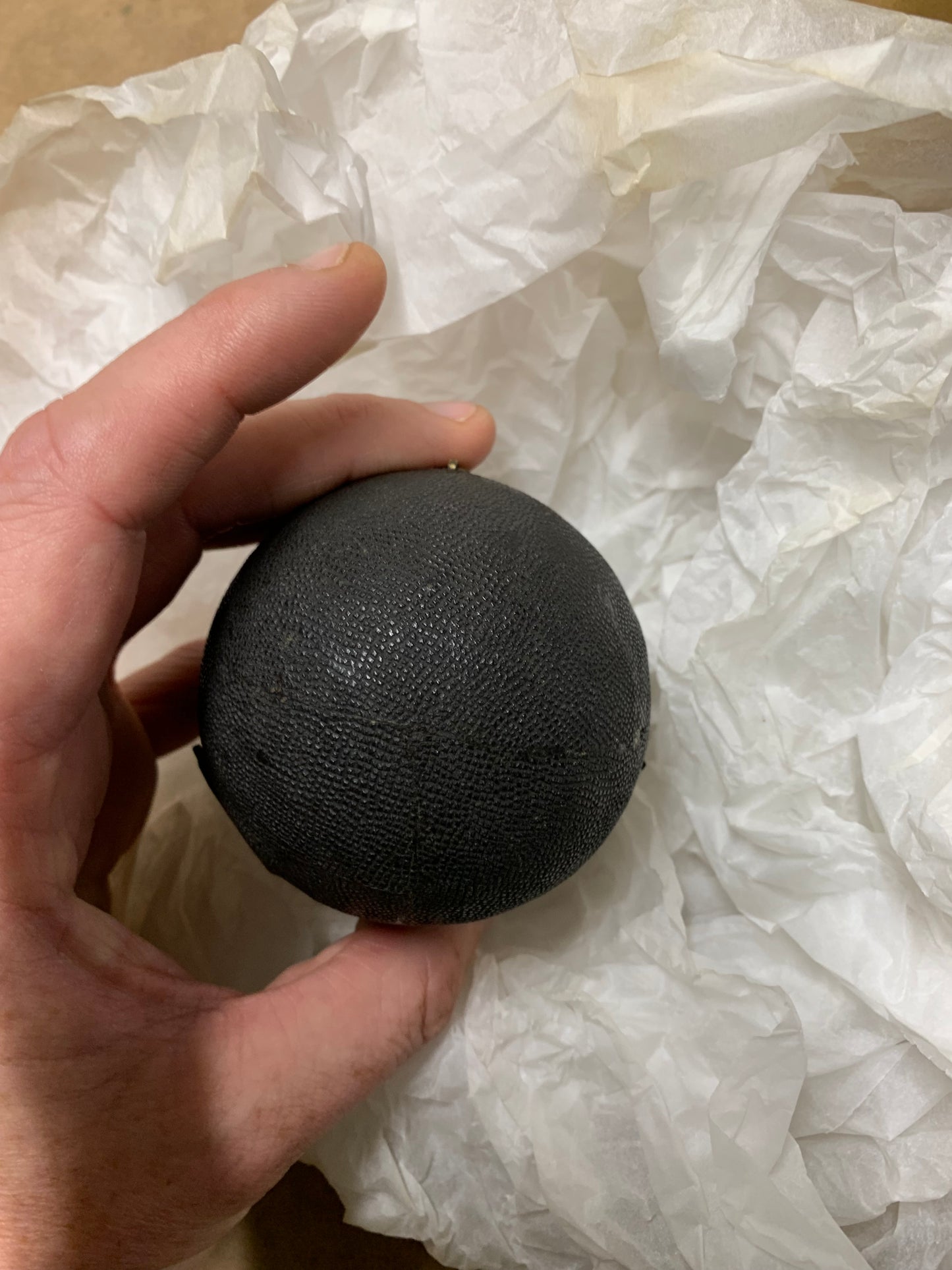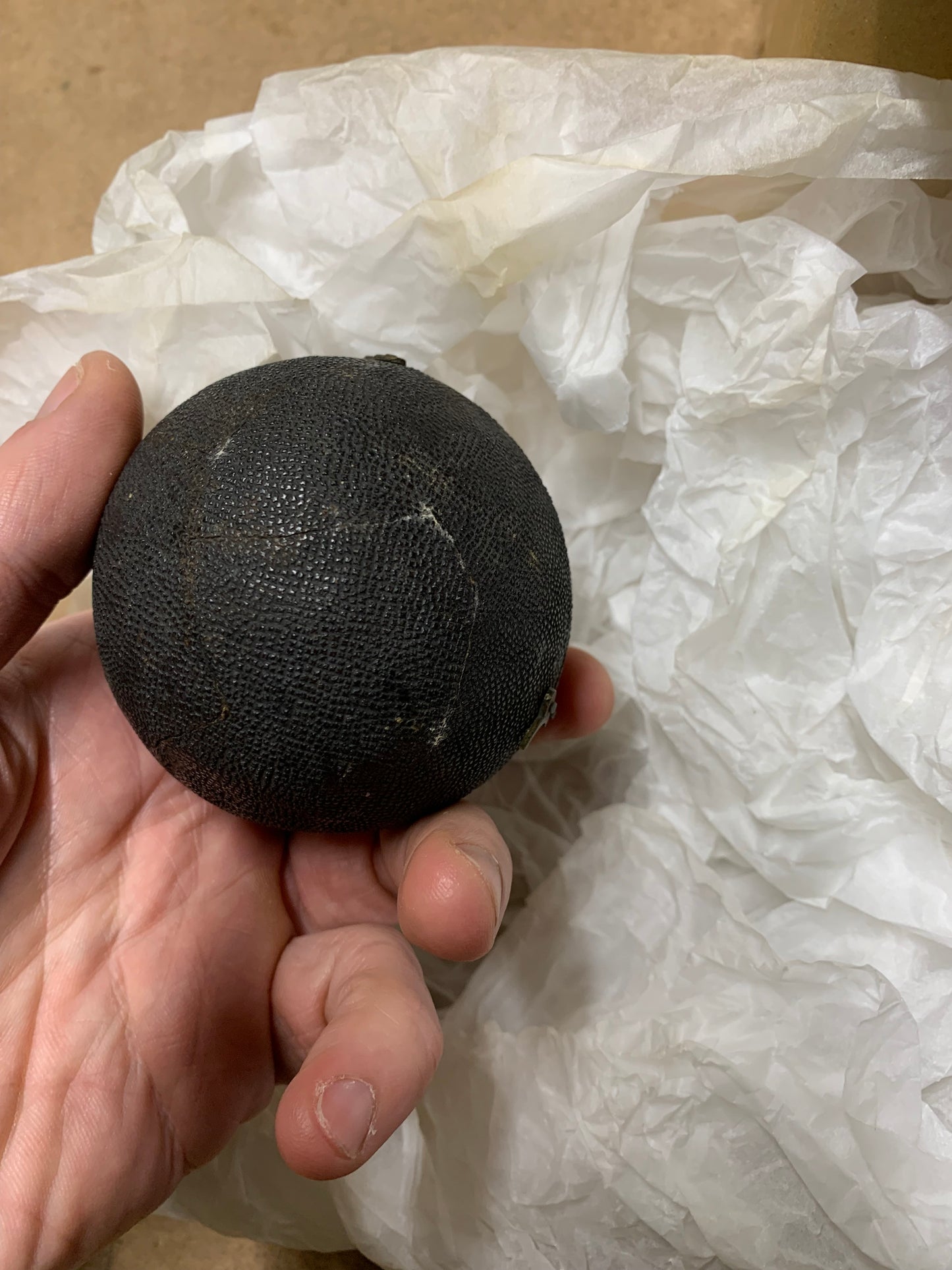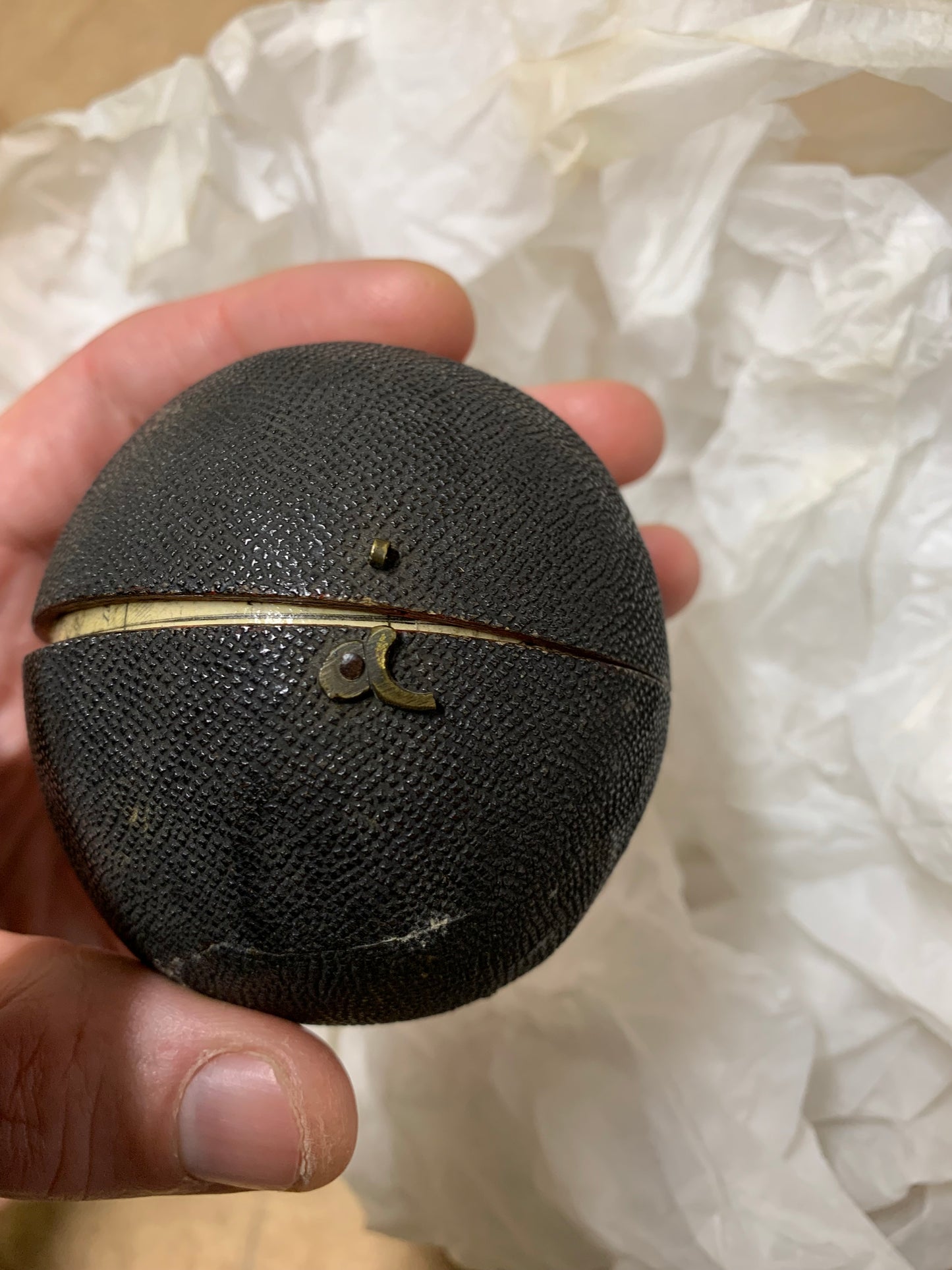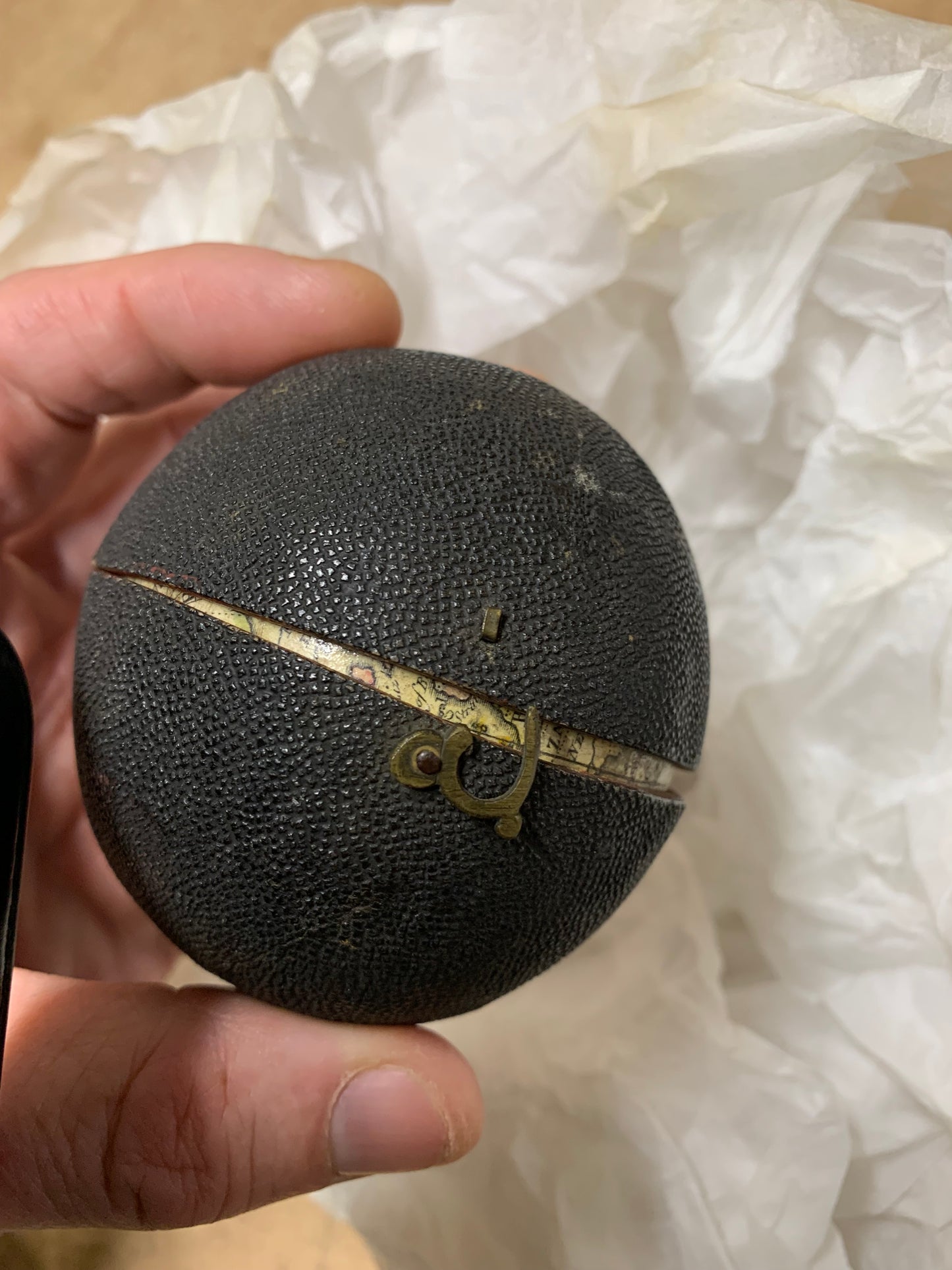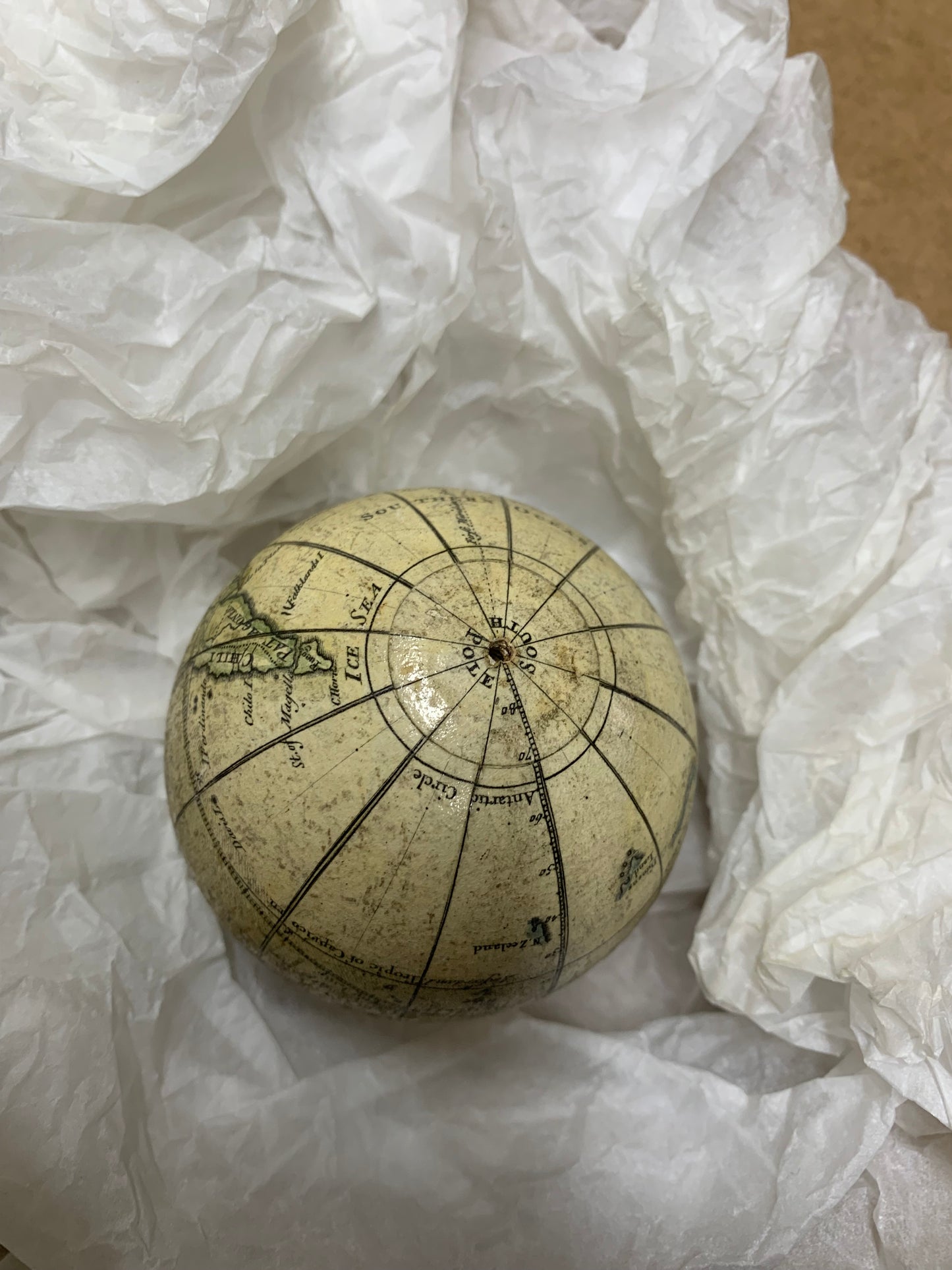BoxMint.co.uk
A FINE 2¾IN. POCKET GLOBE, PUBLISHED BY RICHARD CUSHEE, 1731
A FINE 2¾IN. POCKET GLOBE, PUBLISHED BY RICHARD CUSHEE, 1731
Couldn't load pickup availability
THE PRIVATE COLLECTION: FROM ONE COLLECTOR TO ANOTHER
Items in my own "Private Collection" are delivered in person "From One Collector to Another."
Contact: Kevin on 07424 563 048
A Masterpiece of Enlightenment Cartography
This exquisite 2¾-inch (7.5 cm) pocket globe, crafted in 1731 by the esteemed London globemaker Richard Cushee, is a rare survivor of Georgian-era scientific artistry. Signed and inscribed "A New GLOBE of the Earth by R Cushee 1731", it encapsulates the curiosity and ambition of an age defined by exploration and discovery.
Key Features
Cartographic Detail:
- Twelve hand-painted gores with polar calottes, depicting the world as understood in 1731.
- Australia labeled as New Holland; Northern Canada marked New Britain; Africa denoted Negro Land.
- Celestial gores inside the original shagreen case, with gilt constellations and a meridian line inscribed "First meridian from London."
- Notable inaccuracies: California as an island, unknown parts above North America.
Original Case:
- Retains its period shagreen (sharkskin) casing.
Condition:
- Globe: Varnish shows light wear consistent with age; paper gores remain vibrant with minimal scuffing.
- Case: Structurally sound but does not close fully; one hook repair evident (common for 18th-century examples).
Provenance & Historical Significance
Royal Pedigree:
- Acquired from the estate of William "Backstairs Billy" Tallon (1935–2007), lifelong butler and confidant to Queen Elizabeth The Queen Mother, sold at Reeman Dansie Auctioneers, 5th July 2008 (Lot 335).
- A tangible link to the Queen Mother’s inner circle, enhancing its historical allure.
Literature:
- Cited in Sylvia Sumira’s The Art and History of Globes (British Library, 2014, p.121).
- Illustrated in Dekker & van der Krogt’s Globes from the Western World (Zwemmer, 1993, p.112).
Biography: Richard Cushee (1696–c.1734)
A protégé of the renowned cartographer John Senex, Cushee was a leading figure in London’s scientific instrument trade. He was apprenticed in 1710 to the hydrographer and globe maker Charles Price and became a freeman of the Merchant Taylors' Company in 1721.
In 1731, Cushee took on Nathaniel Hill (fl. 1746–1768) as an apprentice. That same year, in collaboration with instrument maker Thomas Wright, Cushee published Joseph Harris's popular book, "The Description and Use of the Globes, and the Orrery." He began producing pocket globes, which Wright later incorporated into his orreries. Cushee was the first maker to use geocentric projections on the concave surface of a pocket globe case, depicting the heavens as seen from Earth.
Richard Cushee’s globes are exceptionally rare, with only a small number surviving today. Most known examples are held in major institutions, such as the British Museum (which houses a 1731 pocket globe) and the Whipple Museum of the History of Science (which owns a 1730 celestial globe). Scholars like Sylvia Sumira (The Art and History of Globes, 2014) and Elly Dekker (Globes at Greenwich, 1999) note that Cushee’s output was limited, and few have endured outside museum collections.
Materials
Materials
Shipping & Returns
Shipping & Returns
Dimensions
Dimensions
Care Instructions
Care Instructions
Share
